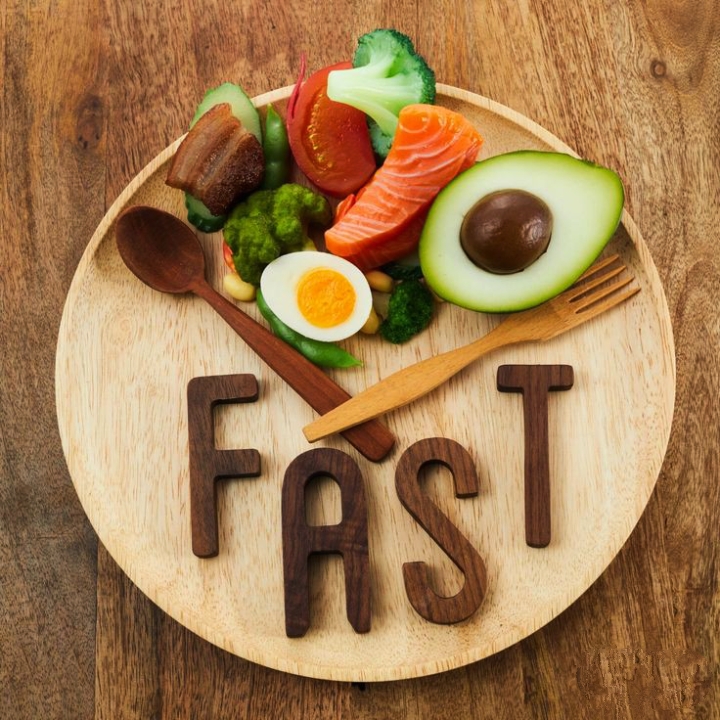Which One is Better?
In the world of weight loss and healthy living, two popular dietary approaches have gained significant attention: the Keto Diet and Intermittent Fasting (IF). Both claim to promote weight loss, improve metabolic health, and enhance overall well-being. But which one is better for you?This article will compare the two, discussing their benefits, drawbacks, and which one may be the best fit for different individuals.

What is the Keto Diet?
The Ketogenic (Keto) Diet is a high-fat, low-carbohydrate diet designed to put your body into a state of ketosis. In ketosis, the body burns fat for energy instead of carbohydrates. This happens because when carb intake is drastically reduced, the body turns to fat stores and converts them into ketones, which serve as an alternative energy source.
Macronutrient Breakdown:
70-80% fat
10-20% protein
5-10% carbohydrates
Benefits of the Keto Diet:
1. Rapid Fat Loss – Since the body primarily burns fat for fuel, it helps in significant fat reduction.
2. Appetite Suppression – High-fat meals keep you full for longer, reducing overall calorie intake.
3. Improved Mental Clarity – Ketones provide a steady energy source to the brain, reducing brain fog.
4. Better Blood Sugar Control – Keto may help stabilize blood sugar levels, making it beneficial for people with insulin resistance or type 2 diabetes.
Drawbacks of the Keto Diet:
1. Keto Flu – Initial side effects like headaches, fatigue, and nausea due to carb withdrawal.
2. Difficult to Maintain – Requires strict food tracking and discipline.
3. Nutrient Deficiency – Cutting out carbs can lead to a lack of fiber, vitamins, and minerals.
4. Possible Increase in Cholesterol – A high-fat intake, especially unhealthy fats, may raise LDL (bad cholesterol).

What is Intermittent Fasting (IF)?
Intermittent Fasting is not a diet but an eating pattern that alternates between periods of eating and fasting. Instead of restricting specific foods, IF focuses on when you eat. The most common IF methods include:
16/8 Method – 16-hour fasting, 8-hour eating window.
5:2 Diet – Eating normally for five days, and consuming only 500-600 calories on two non-consecutive days.
OMAD (One Meal a Day) – Eating only one large meal per day.
Benefits of Intermittent Fasting:
1. Weight Loss Without Strict Dieting – Naturally reduces calorie intake without focusing on specific foods.
2. Increased Fat Burning – Prolonged fasting enhances fat breakdown and boosts metabolism.
3. Improved Insulin Sensitivity – Helps regulate blood sugar levels and may prevent type 2 diabetes.
4. Autophagy (Cellular Cleansing) – Fasting promotes cell repair, which may slow aging and prevent diseases.
5. Flexible and Easy to Follow – Unlike strict diets, IF doesn’t require special meal planning.

Drawbacks of Intermittent Fasting:
1. Hunger and Irritability – Extended fasting periods may cause hunger, irritability, and mood swings.
2. Not Suitable for Everyone – May not be ideal for pregnant women, individuals with eating disorders, or those with certain medical conditions.
3. Overeating Risk – Some people binge on unhealthy foods after fasting periods, negating the benefits.
The Keto Diet is a high-fat, low-carb eating plan that forces the body into ketosis, where fat is burned for energy instead of carbohydrates. It is effective for rapid weight loss, appetite control, and improved mental clarity but requires strict dietary restrictions and may cause initial side effects like keto flu.
On the other hand, Intermittent Fasting (IF) focuses on when you eat rather than what you eat, allowing the body to burn fat more efficiently during fasting periods. It is a flexible approach that promotes weight loss, improves insulin sensitivity, and supports cellular repair, but it may cause hunger and energy fluctuations in some individuals.
Can You Combine Keto and Intermittent Fasting?
Yes! Many people combine Keto and Intermittent Fasting for enhanced results. Since the keto diet already suppresses appetite, fasting becomes easier.
Here’s why the combination works well:
Faster Ketosis – IF helps deplete glycogen stores quicker, entering ketosis faster.
Improved Fat Loss – The body stays in a fat-burning state for longer.
More Energy and Mental Clarity – Ketones provide steady energy, reducing hunger and brain fog.
How to Do It?
Follow a 16/8 IF schedule, eating two high-fat, low-carb meals within the 8-hour window.
Drink water, black coffee, or tea during fasting hours.
Avoid excessive processed fats and focus on healthy fats like avocados, nuts, and olive oil.

Which One is Better for You?
The best choice depends on your lifestyle, goals, and preferences:
Choose Keto if:
You want rapid fat loss and don’t mind strict dietary restrictions.
You struggle with carb cravings and want to stabilize blood sugar levels.
You prefer high-fat meals and can sustain them long-term.
Choose Intermittent Fasting if:
You want a more flexible approach to weight loss.
You don’t want to eliminate specific foods but can manage eating windows.
You prefer a gradual, sustainable way to improve metabolism and overall health.
Combine Both if:
You want maximum fat loss with enhanced metabolic benefits.
You can handle fasting periods without feeling excessively hungry.
You enjoy keto meals and can maintain them long-term.

Conclusion:
Both the Keto Diet and Intermittent Fasting are powerful tools for weight loss and health improvement. The keto diet focuses on reducing carbs and increasing fat intake to achieve ketosis, while intermittent fasting focuses on when you eat rather than what you eat. If you prefer structured meal plans and quick results, Keto might be better for you. If you want a flexible and natural approach to weight loss, Intermittent Fasting could be a better option.
Ultimately, the best diet is the one you can stick to long-term. If you’re unsure, consider experimenting with both and seeing which suits your body and lifestyle the best!






